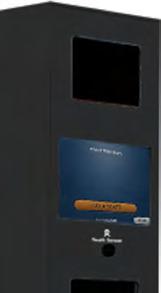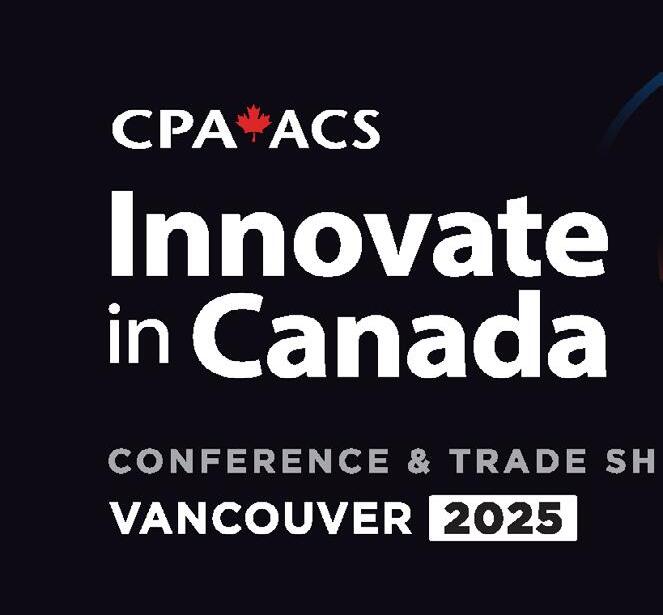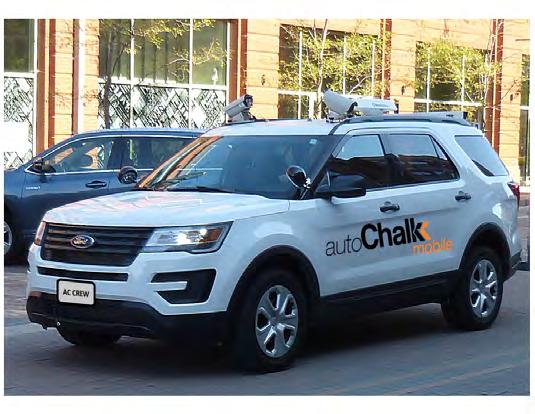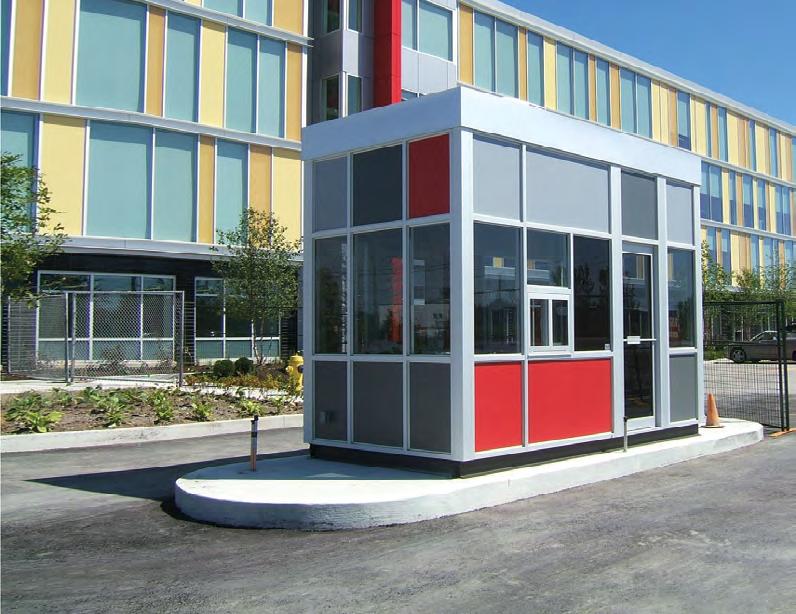PARKER

Canadian Parking Association | 42+ years of innovation


Canadian Parking Association | 42+ years of innovation
ACCESS THE PEOPLE WHO ARE REIMAGINING HOW COMMUNITIES THRIVE AND URBAN CENTRES ARE TRANSFORMING.
• Thought Leaders & Researchers
• Parking Operators & Managers
• Mobility Service Providers
• Urban Planners & Designers
• Transportation Engineers
• Equipment & Technology Innovators

• Sustainable Transportation Advocates
• EV/AV Developers
• Community Advocates
• Government Officials & Policymakers
• Real Estate Developers








PRESIDENT
Ralph Bond BA Consulting Group Ltd. bond@bagroup.com
VICE PRESIDENT
Anna Marie O’Connell patandamo@gmail.com
TREASURER
Frank Cavaliere RJC Engineers fcavaliere@rjc.ca
SECRETARY
Adamo Donatucci Precise Parklink adonatucci@precisebi.com
PAST PRESIDENT
Alex MacIsaac University of Toronto a.macisaac@utoronto.ca
DIRECTORS
David Agosti Simon Fraser University daagosti@sfu.ca
Chris Blaschuk The City of Calgary chris.blaschuk@calgary.ca
Sam Cusick AIMS (EDC) Corp. sam@aimsparking.com
Nicolas Filion Agence de mobilité durable nfilion@agencemobilitedurable.ca
Rozanne Haddad Interior Health Authority Rozanne.Haddad@interiorhealth.ca
Sharon Lewinson ACT Canada info@actcanada.com
James Mackay Mackay Meters james.mackay@mackaymeters.com
Ken Skinner Crombie REIT ken.skinner@crombie.ca
Randy Topolniski Winnipeg Parking Authority randytopolniski@winnipeg.ca
EXECUTIVE DIRECTOR
Carole Whitehorne 613 727 0700 x 10 carole@canadianparking.ca
BRAND & COMMUNICATIONS
Brenda Hanna 613 727 0700 x 15 brenda@canadianparking.ca

The Canadian Parking Association is now offering three marketing options to effectively connect with potential clients. Maximize your outreach and direct your advertising towards the Canadian Parking and Mobility markets by taking advantage of these new opportunities offered by the CPA.
Combine advertising options and save. Ad space rates for Parker magazine will be discounted by 10% for each issue that is accompanied by an online web ad or eNewsletter ad.
Combined circulation for Parker and eNewsletter options will place your ad in front of 4,500 contacts up to 30 times in a calendar year. Online ads and electronic Parker are just a click away, and will link CPA contacts and visitors directly to your site.
Secure your preferred space today.

EDITOR AND ADVERTISING
carole@canadianparking.ca
613-727-0700 x 10
DESIGN AND MARKETING
brenda@canadianparking.ca
613-727-0700 x 15





Distribution: 4,200
RESERVE YOUR ADVERTISING SPACE TODAY! info@canadianparking.ca



STAY CONNECTED WITH THE CPA www.canadianparking.ca/contact


















































CAROLE WHITEHORNE, EXECUTIVE DIRECTOR
As we step into the second quarter of the year, I am thrilled to reflect on the exciting and busy first quarter we experienced here at the Canadian Parking Association (CPA). Our efforts have been marked by a renewed sense of community within our industry. The enthusiasm and dedication shown by each one of you have been truly remarkable.
First, I am delighted to announce our new Associate Partner, FlashParking Canada Inc. FlashParking brings with them a wealth of expertise and innovative solutions that are positioned to transform the approach to parking management. Their CPA partnership promises to be a significant milestone in the journey towards enhancing the parking experience across Canada. We appreciate the positive impact they will have on the CPA and extend thanks for their active participation in our initiatives.
The annual conference and trade show has launched with remarkable success, serving as a testament to the vibrant community we have built. The response has been overwhelmingly positive, with attendees and exhibiting companies registering from across the nation and beyond. This event is a cornerstone of our association, fostering collaboration and the exchange of ideas that drive our industry forward. This year, our focus will be on Canada, and the homegrown excellence that abounds. We extend an invitation to join us in engaging in thought-provoking discussions, networking opportunities, insightful presentations, and the trade show exhibition for what is shaping up to be another successful event. Early bird rates are available until June 15, so now is the time to register!
As we continue to build on this momentum, I am pleased to announce the dates for our local chapter events, which are scheduled to take place in several cities across Canada in the coming
weeks. These events provide a unique platform for members to connect on a regional level, share best practices, and address local parking challenges. I encourage everyone to mark their calendars and take advantage of these opportunities to engage with peers and contribute to the growth of our industry. Dates and locations are available further in this issue and online at canadianparking.ca. Agendas and registration will be communicated shortly, so please stay tuned for further details.
None of these achievements would have been possible without the unwavering support and dedication of your board members. It has been a challenge shedding the lingering effects of the Covid pandemic and now we face unprecedented challenges in our current economic climate. Their leadership and vision have been instrumental in guiding the association towards success. I would also like to extend a special thank you to Brenda Hanna for her outstanding contributions in these busy times. Her commitment to excellence and tireless efforts have enriched our association for more than 25 years, and we are deeply grateful for her service.
I invite you all to visit our website, canadianparking. ca and watch for our e-newsletters in your inbox for the latest updates on our initiatives, upcoming events, and industry news. Your continued engagement is vital to the success of the CPA, and we look forward to your active participation in the months ahead.
Thank you once again for your support and dedication. Together, we will continue to drive innovation and excellence in the parking industry. n

Carole Whitehorne, Executive Director

Your continued engagement is vital to the success of the CPA, and we look forward to your active participation in the months ahead.


Located in downtown Vancouver, BC, the Hyatt Regency will be the headquarters for this conference and trade show event.






Don't miss the chance to secure the best rate for the CPA’s premier event in 2025. Register by June 15, 2025, and take advantage of significant savings for you and your group.
Stay tuned for more details on the conference agenda, speaker lineup, and tradeshow exhibitors, not to mention the pre- and post-conference events that are being planned. We look forward to welcoming you so register today!
RALPH BOND, PRESIDENT
I am happy to report that your board of directors had a productive meeting in early March. We held the meeting virtually once again to save costs and begin to replenish our reserves that were depleted during the pandemic. We approved the budget for the next fiscal year and started the process of reviewing our existing programs and services to determine where improvements can be made. Please do not hesitate to send us any suggestions you have for improvement. The CPA Directors are listed on the website, as well as in this issue of Parker.
We also advanced planning for the 2025 Conference and Trade Show that will be in Vancouver this year from October 5 – 8. Everyone loves to visit this amazing City, and we are looking forward to seeing you there once again. Don’t forget to mark the conference date in your calendars and register to attend now so you don’t miss a great event. Please also consider submitting a presentation for the conference and add value to our members’ knowledge base.
To provide a way for members to engage with each other between conferences we are planning local chapter events this spring. Dates and cities will be announced soon. The board is also developing some working committees that will focus on topics like Technology, Parking and Mobility, the CPA Awards, the Parker Magazine and others. Please stay tuned for further news on these initiatives.
We are always in need of interesting content for the Parker magazine, so we encourage you to submit
an article. It could be about a significant trend you see emerging in the parking and mobility industry, or it could be about a significant project at your place of work that is underway or recently completed. For example, our members would be pleased to learn about a new garage or green parking lot, a reduction in parking inventory due to transportation demand management plans, or case studies on ticketless parking solutions with or without gates. The topics are endless.
Finally, please consider nominating an industry leader or a specific project for one of the 2025 CPA Awards so that our members’ accomplishments can be recognized and publicized. It is quite gratifying to see the joy that people feel when they are recognized by their industry and peers. The CPA considers awards in these categories: Business Excellence, Innovation in Parking and Programs, Supervisor of the Year, Employee of the Year, and Contributing Member of the Year. The prestigious CPA Founders Awards include the Ted Seeberg and Ed Keate Awards for outstanding service to the association and the parking and mobility industry. Details and application forms can be found on our website.
Wishing everyone a great spring and prosperous year. I can be reached at bond@bagroup.com. n

CPA President

We are always in need of interesting content for the Parker magazine, so we encourage you to submit an article.

BY LUIGI LATO, CHIEF OPERATING OFFICER, PRECISE PARKLINK
AS WE ENTER 2025, TECHNOLOGICAL ADVANCEMENTS AND THE RISING EMPHASIS ON CONNECTED EXPERIENCES ARE TRANSFORMING THE PARKING INDUSTRY. THESE INNOVATIONS CREATE OPPORTUNITIES TO IMPROVE CUSTOMER JOURNEYS, STREAMLINE OPERATIONS, AND ACHIEVE SUSTAINABILITY GOALS. ADOPTING A FORWARD-THINKING STRATEGY IS ESSENTIAL FOR FACILITY MANAGERS AND OWNERS TO STAY COMPETITIVE IN THIS EVOLVING LANDSCAPE.
Check out the top 25 solutions to empower your parking management strategy and position you for success in the upcoming year and beyond.
1. Advanced electric vehicle (EV) charging solutions tailored to societal demands.
With the Canadian government mandating the end of gas-powered vehicle production by 2025, the demand for electric vehicles (EV) is gaining popularity. Now is the time to start planning your EV charging station infrastructure. Installing EV charging stations within your parking facility increases your lot's desirability, catering to a broader audience in search of convenient and sustainable parking solutions.
2. Leverage Internet of Things (IoT) and smart parking sensors for real-time insights and streamlined operations. Deploying smart parking sensors can provide real-time data on occupancy levels. These sensors detect whether a parking stall is vacant or occupied and transmit this information to a centralized system. Seamlessly tracking vehicular data for various use cases facilitates optimal space utilization, minimizes congestion, and elevates overall operational effectiveness.
3. Enhancing parking facility efficiency with internal automation.
Internal automation is revolutionizing parking facilities by streamlining operations and improving overall efficiency. From automation billing and permit management to realtime monitoring and enforcement, automation tools reduce the need for manual interventions, allowing staff to focus on higher-value tasks. It can offer faster, more accurate services while reducing operational costs by automating routine processes such as payment collection, permit issuance, and reporting. Additionally, automated systems provide real-time data and insights, helping facility managers make informed decisions and optimize resource allocation.
4. Generative AI algorithms for accurate and intelligent parking predictions.
Generative AI algorithms can predict parking demand using historical data, events, or trends. This enables better resource allocation and planning for parking facilities. It also allows parking operators to develop a pricing strategy based on traffic patterns, maximize revenue and proactively identifying issues and equipment breakdowns.
5. Interactive business intelligence (BI) dashboards for powerful and enhanced data visualization.
In contemporary parking facility management, visually interpreting data is key. Select a business intelligence system that functions as a central management platform that will allow you to successfully manage and control your parking portfolio with access to a wealth of data insights, real-time system performance, and live control over the technology on-site.
6. Mobile parking platforms aligning with Mobility-as-a-Service (MaaS) innovations.
A mobile parking platform is one of many ways to implement Mobility-as-a-Service (MaaS) into your parking strategy. Offering your customers a quick and easy way to pay, reserve parking, and schedule last-mile services all from their mobile devices creates a seamless parking experience and increases your parking revenue.
7. Micromobility parking stalls designed for diverse transportation modes.
As the concept of micromobility continues to grow, parking facilities need to accommodate eco-friendly transportation alternatives like e-scooters, bicycles, and carpooling. By allocating specific spaces within the facility for these compact modes of transportation and implementing clear signage, you optimize parking stall usage and facilitate easier facility management for owners.
8. Secure payment processing procedures to ensure transparency and trust.
Financial compliance is critical as mandates and payment processing procedures evolve annually. Parking facility managers must proactively engage with their technology provider to ensure compliance and make necessary upgrades to meet the latest standards. Incorporating contactless payments and digital wallets ensures financial transparency and compliance with evolving standards while enhancing the customer experience.
9. Digital signage for improved wayfinding and essential facility information.
Step into the future of navigation with the implementation of digitalized wayfinding signage. Digital signage is highly adaptable and can be used for various use cases, including real-time occupancy updates, communication, operational updates, and safety information. It can even be sold to third-party advertisers to promote their brand, allowing you to capitalize on an additional revenue stream.
10. Dynamic pricing to maximize revenues and occupancy levels.
Incorporating dynamic pricing into your parking strategy is an effective method for maximizing revenue and optimizing space utilization. By upgrading hardware, you can enable seamless digital actions and behaviour tracking, allowing you to adjust prices in real-time based on demand. This approach personalizes the customer experience while ensuring maximum profitability and efficiency for parking facilities.
11. License Plate Recognition (LPR) technology for intelligent vehicle access control.
Devising a strategic parking operation plan starts with understanding where, when, and for how long customers park at your facility. Intelligent technologies like license plate recognition (LPR) allow you to devise smart access control, provide automatic enforcement and gather realtime business intelligence. Drawing on LPR for accurate license plate capture are digital vehicle signatures—which recognizes the make, model, and colour to help detect and cater to returning or frequent visitors.
12. Smart sensors and vehicle heads-up displays for frictionless parking.
Smart sensors and vehicle heads-up displays (HUDs) create a frictionless parking experience. Smart sensors, placed throughout parking facilities, detect space availability in real-time and transmit this data directly to the vehicle’s HUD. Drivers receive clear, intuitive directions to open spots without distractions, streamlining navigation and reducing congestion.
On the operational side, sensors gather real-time data, helping parking managers maximize space efficiency, enhance security, and improve overall control. This combination of smart sensors and HUDs enhances the user experience while offering valuable insights for parking facilities to boost revenue and streamline operations.
13. 24/7 remote monitoring and digital customer service for instant support and assistance.
Incorporate 24/7 virtual customer service to elevate customer support within your parking facility and monitor the health of your equipment. Whether utilizing AI technologies or remote CSRs, or a combination of both, you have the capacity to provide real-time assistance, address inquiries, and guide customers through various parking processes whenever necessary. This ensures timely assistance and uninterrupted operations.
14. A comprehensive parking information webpage to enhance your online presence.
Developing a robust online presence where customers can easily access information about your parking lot is vital. This creates a direct communication channel for your visitors and provides information on your lots. Setting up dedicated pages within your website and a local business page on Google will allow you to maximize your location awareness.
Once you have perfected your online presence, it's time to start capitalizing on local SEO techniques. This will ensure your facility's physical location is visible in the top results of search engines and in-car navigation systems, thus increasing the number of drivers who request directions to your parking facility.
15. QR code and barcode scanners for fast and efficient entry and exit.
Integrating barcode scanners with your existing parking technology is an easy way to begin accepting digital permits, payment flexibility, validations, reservations, and loyalty programs using QR codes or barcodes.
16. Accessible parking pay stations for equal access, ease, and convenience.
Creating an environment that prioritizes accessibility helps your parking facility provide equal opportunities for everyone, regardless of their physical abilities. Pay stations must feature adjustable height and hearing-aid compatibility to accommodate individuals with diverse mobility needs. This commitment aligns with principles of inclusivity and enhances the overall accessibility and usability for a wider range of individuals.
17. Online ads to boost location awareness and visibility.
As a parking facility manager, your goal is to get your location in front of as many people as possible, and running online ad campaigns will help you do just that. When
developing a paid ad campaign, it is vital to determine a few key factors: your target demographic, where they spend their time, and the keywords they use when looking for your facility. This will give you insight into where to target your next ad campaign.
18. Scan-for-assistance signage for streamlined parking operations without on-site staff.
Customer inquiries are inevitable in parking environments. By incorporating a scan-for-assistance solution, you can provide customers with a unique and instant self-service option, offering immediate on-site assistance without requiring on-site staff.
19. Bluetooth Low Energy (BLE) permits for seamless hands-free facility access.
Offering Bluetooth Low Energy (BLE) permits is a great starting point for smart access and connected building strategies. BLE permits allow registered users to access your gated parking facility seamlessly by using Bluetooth on their smartphone. Once the registered users arrive at the parking entry or exit lane, their mobile BLE permit is detected by a BLE reader, and the gate automatically opens. frictionless solution reduces wait times and enhances user satisfaction.
20. Quality assurance audits to ensure compliance with operational safety standards.
Ensuring your parking facility is well-maintained and meets standard safety requirements is vital. It is important to conduct frequent on-site audits or monitor your parking facility remotely to ensure your parking experience remains pleasant.
21. Maintenance and technical support programs to optimize equipment performance.
Maintaining the functionality of your parking facility is crucial for building customer trust. To achieve this, it is essential to establish a reliable maintenance and technical support system with your supplier to effectively address downtimes. This involves considering various support elements, including warranty and parts supply programs, comprehensive installation and maintenance packages, self-maintenance training options, technical service availability, and efficient back-end troubleshooting.
22. Digital kiosks with advertising opportunities to generate additional revenue.
There are more ways to add a revenue stream to your parking facility than you may expect. Investing in a digital kiosk will allow you to promote your business or sell advertising space to others. The best part? This standalone technology can be integrated into your existing parking infrastructure, so no downtime is required!

PROACTIVELY ADOPTING THESE TECHNOLOGIES AND STRATEGIES ENSURES YOUR PARKING FACILITY REMAINS AT THE FOREFRONT OF INNOVATION IN 2025 AND BEYOND.
23. Flexible parking permits with automated management for improved convenience and revenue.
The traditional workday has evolved into one that offers employees flexibility, convenience, and choice. Your parking solution should reflect this shift. Flexible parking permits provide your customers with options tailored to their unique needs, securing customer loyalty and recurring revenue streams. By integrating permit software that automates your entire billing and collection process, you gain the ability to manage diverse permit types, including long-term, short-term, temporary guest, or contractor permits, with ease. The software should support multiple billing and payment options, offer the flexibility to set billing cycles, and help regulate your monthly cash flow. Adding mobile wallet integrations is an added bonus that provides your customers with convenient access to their permits.
24. Energy-efficient parking meters that enhance the eco-friendliness of your facility.
Eco-friendly parking facilities featuring energy-saving parking technology are becoming increasingly important. Recognizing the heightened
environmental consciousness among customers, parking facilities are urged to integrate advanced energy-saving and eco-friendly elements to establish trust with their customers. Considering solar panel-powered models and motion sensoractivated LED lights in parking meters are viable options, presenting an opportunity for reduced operational costs.
25. Integration with urban mobility hubs for a connected experience.
Urban mobility hubs are becoming essential for cities aiming to streamline transportation. Integrating your parking facility with these hubs provides seamless connections to public transit, rideshare services, and micro-mobility options like e-bikes or scooters. This enhances customer convenience and supports sustainable urban transportation goals, positioning your facility as a key player in the future of mobility.
By embracing these solutions, parking facility managers and owners can create efficient, customerfocused facilities that thrive in the evolving parking and mobility landscape. Proactively adopting these technologies and strategies ensures your parking facility remains at the forefront of innovation in 2025 and beyond n

ABOUT THE AUTHOR: Luigi Lato, Chief Operating Officer, Precise ParkLink
References
A guide to ADA compliance in Canada. ADA Solutions - Tactile Warning Surfaces. (2023, October 17). https://adatile.com/a-guide-to-ada-compliancein-canada/
Accessible parking. ADA National Network. (2023, November 16). https:// adata.org/factsheet/parking
City of Toronto accessibility design guidelines. City of Toronto. (n.d.). https:// www.toronto.ca/wp-content/uploads/2017/08/8fcf-accessibility_design_ guidelines.pdf
Highway Traffic Act R.R.O. 1990, REGULATION 581 ACCESSIBLE PARKING FOR PERSONS WITH DISABILITIES. Ontario.ca. (2018, November 19). https:// www.ontario.ca/laws/regulation/900581
Schmidt, S. (2024, November 15). Mobility hubs: The future of multimodal transportation in Cities. PTV Blog. https://blog.ptvgroup.com/en/trendtopics/mobility-hubs-the-future-of-multimodal-transportation-in-cities/
Signage for Accessible Parking. GTAA Illustrated Technical Guide to the Design of Public Spaces. (n.d.). https://gaates.org/DOPS/section_2_6_4. php#:~:text=Requirements%20for%20the%20Design%20of%20 Accessible%20Parking%20Signage&text=Each%20accessible%20parking%20 space%20must,under%20the%20Highway%20Traffic%20Act.
Partner with the CPA to provide opportunities for growth in the coming years, bring more programming and education to CPA members and take your place as a leader in Canadian parking and mobility innovation.
Champion, Principle and Associate levels are available, and each comes with many valuable benefits for a single annual fee.
Promote your business to the parking and mobility industries in Canada by joining the CPA Partnership Program. We are keen to form strong partnerships and work with you to understand how we can create an alliance that is mutually beneficial to both parties, as well as for members of the CPA and those attending our events.
Canadians are established as leaders in North America who embrace the development and use of technology in their daily activities, and the parking industry is at the top of this field.
Partner with the CPA and gain exclusive access to this unique Canadian market and help our members to continue to be leaders of this important trend.
Demonstrate pride in supporting a Canadian association that delivers many opportunities, including the Annual Conference and Trade Show, and connect with the serious buyers you are searching for. Members of the Canadian Parking Association and stakeholders who attend this annual event are the decision makers for their organizations. Time spent networking with these delegates produces significant opportunities for vendors. Solid relationships are forged with the right people, ensuring a significant ROI to partners and exhibiting companies.
Partnership support establishes your company’s commitment to ensuring growth and profitability of this changing and diverse industry and puts your brand out front beyond the annual event through a targeted marketing program specific to the Canadian parking and mobility industry.
Establish your organization as leaders by supporting business intelligence and knowledge that will shape the future of the industry, while addressing opportunities and disruptors!
Provide mentorship in developing best practices, standards and growth for members who serve their communities through professional development opportunities offered to partners.
Enjoy significant benefits such as reduced exhibit fees, marketing opportunities, local and virtual networking events and other features included in an annual partnership.

We welcome the following new members to the Canadian Parking Association. Some are new to the industry, and some familiar names have been a part of the industry for several years, and are now included in the CPA membership. Thanks to all members for your support.
City of St. John's
Mary Beth Delaney PO Box 908 St. John’s NF A1C 5M2
Durham College
Amanda Blenkhorn 2000 Simcoe St. N Oshawa, ON L1G 0C5
FAAC Parking Solutions
Michael Sengal 4170 Sladeview Unit 5 Misissauga, ON L5L 5R2
IMPARK
Shawn Collins 300-601 West Cordova St. Vancouver, BC V6B 1G1
National Arts Centre
Antoine Ménard 1 Elgin St, PO Box 1534, Stn B Ottawa, ON K1P 5W1
NEOGARD, A part of Hempel
Sarah Kaumeyer 111-19097 26th Ave Surrey, BC V3Z 3V7
Passport
Adam Kriegel 100 - 8000 Avalon Blvd Alpharetta, GA 28202
Performance Products
International
Jason Moulton 209 8 Ave SW Ste 600 Calgary, AB T2P 1B8
Polycrete Restorations Ltd.
Natasha Bowman #202, 204 Cayer St Coquitlam, BC V3K 5B1
RJC Engineers
Nigel Parker #200, 1816 Crowchild Trail, NW Calgary, AB T2M 3Y7
St. Joseph’s Health Care –London
Natasha Sharpe 268 Grosvenor St London ON N6A 4V2
Vancouver Airport Authority
Sheryl Lee PO Box 44638
YVR Domestic Terminal RPO Richmond, BC V7B 1W2










BY RICK NEUBAUER
Curb management is rapidly becoming a major issue in Canada, particularly in densely populated cities like Toronto, Vancouver, and Montreal. Urban congestion is increasing for a number of reasons, including rising e-commerce deliveries, the growing presence of ride-hailing services, and the overall demand for curb space. This has created a pressing need for municipalities to rethink how they allocate and regulate curb space effectively.
Why is it so important for cities throughout Canada to address this issue?
Rising competition for curb space has led to increased traffic congestion and related safety issues, a host of regulatory challenges as cities struggle to create curb management policies from scratch, and stumbles in achieving sustainability goals. Without well-planned curb management strategies, cities risk worsening congestion, facing increased carbon emissions, and suffering from inefficient use of public space.
The good news is that technology can help. As municipalities strive to develop smart city initiatives, artificial intelligence (AI) has emerged as a promising tool to enhance curb space efficiency as well as anticipate and meet evolving urban mobility demands. However, the rise of "AI-washing" has made it difficult for cities to differentiate between truly valuable AI-powered solutions and mere marketing buzzwords.
While AI has the potential to revolutionize curb management by leveraging predictive analytics and allowing cities to take a more proactive stance on managing curb real estate, not every technology that claims to use AI is genuinely leveraging its capabilities. Many companies in the parking and mobility sector promote their solutions as AI-driven when they are merely repackaging basic data analytics or rule-based automation. This phenomenon, known as AI-washing, makes it harder for decision-makers to identify which technologies offer real, strategic value. To avoid succumbing to AI-washing, city planners and managers should ask key questions before investing in AI tools:
Is the company a true technology company?
Determine whether the vendor specializes in developing cutting-edge technology or if it is merely attempting to pivot and retrofit legacy tech into the AI


space without deep expertise. When companies attempt to merely repackage their solutions as AI, it usually results in subpar performance and limited capabilities. Repackaging longstanding data analytics tools as being AI-driven is at best dishonest and at worst fraudulent. AI-powered tools should be built with AI in mind from the ground up to deliver optimal functionality.
Companies with technology innovation as their core competency are more likely to provide true, scalable AI solutions.
Does the AI provide strategic value?
Listen carefully to the vendor’s explanation of their AI’s capabilities. If the AI doesn’t provide tangible value—such as improved efficiency, enhanced enforcement, or better forecasting—it may be simply the company’s Marketing hype and not worth the investment.
Can the company clearly articulate how AI is being used?
Even if a solution truly integrates AI, it still must align with the customer’s or city’s strategic goals. Without clear use cases and measurable outcomes, AI-powered solutions risk being costly distractions rather than effective tools. It’s easy to get distracted by shiny objects, but you need to stay true to your strategic direction. Otherwise, you risk wasting money and losing momentum or even worse, going in the wrong directions.
By addressing these questions, municipalities can sift through AI-washing and select solutions that genuinely enhance their curb management strategies.
When implemented correctly, AI-powered solutions can deliver substantial benefits for cities managing their curb inventory. These technologies provide superior analytics, predictive modeling, and automation capabilities that optimize resource allocation and curb space utilization. AI enables cities to stay ahead of the curve, adapting to evolving urban challenges with innovative, data-driven solutions.
Computer Vision for Real-Time Curb Monitoring
One of the most effective AI applications in curb management is computer vision. Custom AI-driven computer vision models can analyze real-time curbside activity, including traffic flow, parking and loading zone occupancy, and pedestrian behavior. Solar-powered LTE dual-sensor cameras can be deployed without the need for invasive underground wiring, making them a cost-effective and scalable option for municipalities. These cameras provide continuous monitoring and generate rich metadata, enabling authorities to make informed decisions based on real-time insights. With high accuracy and low cost per space, computer vision offers an efficient way to manage curb space while minimizing infrastructure investment.
AI-Powered Enforcement and Regulation
AI can also significantly enhance enforcement by integrating with curb management platforms to detect and address violations automatically. For instance, AI can track vehicles exceeding their allotted parking time and issue citations automatically, reducing the need for manual enforcement. Also, by analyzing ticketing trends, AI can help cities optimize enforcement resources, ensuring fair and efficient regulation. This approach streamlines parking enforcement, reduces administrative overhead, and fosters compliance with curb policies.
AI-Driven Curb Policy Recommendations
AI can serve as a valuable decision-making tool for municipalities by analyzing historical and real-time data to recommend optimal curb policies. For instance, it can predict demand fluctuations and suggest policy adjustments to accommodate different users, such as delivery vehicles, ride-hailing services, and cyclists. AI-powered curb management technology can also help implement dynamic pricing structures based on demand, encouraging turnover and maximizing revenue. Finally, these systems can work in tandem with other smart city technologies, such as traffic control systems and public transit platforms, to enhance urban mobility holistically.
One of the most exciting applications of AI in curb management is predictive modeling. AI-driven forecasting engines can analyze data to estimate the impact of different curb policy changes, giving planners and policymakers an idea of how new policies will impact the curb even before they are implemented. For instance, AI models can predict how adjustments to pricing or enforcement will influence revenue generation. Also, by evaluating historical traffic patterns, AI can forecast how curb policy changes will affect congestion levels. Finally, it can estimate reductions in emissions based on optimized curb space management, helping cities achieve sustainability goals.
By leveraging these forecasting capabilities, Canadian cities can design customized data-driven curb policies that balance efficiency, sustainability, and economic growth.
As Canadian cities continue to grapple with urban congestion and evolving mobility demands, AI will play an increasingly important role in shaping the future of curb management. However, to unlock its full potential, municipalities must choose the right tools, avoiding providers who engage in AI-washing and prioritizing solutions that deliver genuine strategic value.
By adopting AI-driven computer vision models, automated enforcement tools, intelligent policy recommendations, and predictive analytics, cities can transform curb management into a more efficient, sustainable, and adaptable system. This will not only enhance urban mobility but also improve safety, revenue optimization, and the overall quality of life for residents and visitors.
With the right AI-powered solutions, Canadian cities can lead the way in smart curb management, setting a global standard for innovation in urban mobility.

ABOUT THE AUTHOR: Rick Neubauer is the CEO of Umojo, a leading provider of AI-powered curb management technologies. He can be reached at rneubauer@umojo.com.

Open to individual members of the Canadian Parking Association who have demonstrated a continued commitment to the development of the image of parking as a professional industry by:
• Excelling in their area of work and in their personal achievements;
• Improving the value, efficiency and sustainability of the services they provide;
• Participating in professional development activities which go beyond the average requirements;
• Setting examples to which others aspire;
• Developing a concept, process or procedure that enhances or improves the efficiency of an existing method that is adopted by their organization;
• Showing evidence of leadership in the parking industry.
Open to all members of the CPA who have operational processes, programs or technical innovations that exemplify the experience of innovation, economic results, benefits to its company or other groups in the community, and new developments that may be an advantage or value to others, all of which may represent new ideas or concepts, projects, or programs that benefit the parking profession and related sustainable programs.
For CPA members who create programs around value for customers, and/or highlighting the professionalism of the parking industry in the community, spotlighting outstanding marketing, promotional, public relations, and communications-outreach efforts in the parking industry and the communities served.
Open to CPA members in the Supplier, Consultant and Private Operator sectors who demonstrate continued commitment to the development and advancement of the parking industry by:
• Developing innovative technological advancements in areas that support the parking industry (innovations should go far beyond marginal improvements in existing products and services and will be based on breadth and depth of impact on the parking industry).
• Successfully satisfying client expectations in terms of product adaptation and reliable service excellence after sales;
• Demonstrating excellence in entrepreneurship & business leadership;
• Displaying commitment to the Canadian Parking Association through program participation and supporting development of new initiatives for members;
• Demonstrating the ability to develop new products/services or make improvements to existing products/services through the application of an existing or new technology;
• Applying innovative approaches to emerging trends which directly impact the parking industry.
For parking supervisors in leadership positions at front line parking operations, who have made a marked difference through demonstrated solid leadership skills, guidance, and support of both the company and his/her direct reports.
Acknowledge an individual's exemplary customer service and demonstrated commitment to his/her team through actions aboveand-beyond his/her job description.
The formation of the Canadian Parking Association more than 40 years ago lead to the realization that the parking and mobility industry is rich with professionals from many disciplines.
Contributions to the success of the industry range from the tireless dedication of volunteers to the creation of innovative systems and technology development. Many members of the parking industry have been acknowledged by Principals of Read Jones Christoffersen through two awards:
Only members of the Canadian Parking Association may submit a nomination, or be eligible to receive an award.
The Ted Seeberg Memorial Award for Outstanding Contribution to the Canadian Parking and Mobility Industry
The Ed Keate Award for Outstanding Contribution to Advancement of Knowledge in the Parking and Mobility Industry
Information can be found on the CPA website at canadianparking.ca/cpa-awards/
NOMINATE SOMEONE TODAY
Winners will be announced during the Annual Conference and Trade Show in Vancouver, October 5-8, 2025.

By Bob Andrews
The electric vehicle age is coming, and it will have a significant impact on parking owners across Canada. Both the national government and the automakers themselves have set aggressive EV goals. The Canadian government has mandated that all new lightduty vehicle sales must be zero-emission by 2035, with interim targets set at 20% by 2026 and 60% by 2030. Furthermore, at least 35% of new medium- and heavy-duty vehicle sales must by ZEVs by 2030, with full adoption by 2040 “where feasible.”
Automakers’ targets are just as aggressive. General Motors plans to produce only EVs by 2035 and Volvo plans to be fully electric by 2030. As a result of these impending changes, parking owners must now figure out how to add EV charging to their parking assets, how much to add, and most importantly, which technology to implement. Most charging will occur in parking facilities, particularly those that provide long-term parking, so the transition to electric vehicles will have a particularly pronounced impact on parking owners and institutions with parking assets.
At least for now, adding EV chargers is primarily a matter of being able to offer an attractive user amenity. But there are financial reasons to be focused on EV charging too. Parking is already an important source of income for many properties and institutions, and monetizing EV charging will just make parking more valuable. However, owners will only realize the full potential value of their EV infrastructure if they plan carefully and make the right choices when selecting their EV technology.
“If you hope to monetize your EV charging equipment, a closed system presents additional disadvantages. Doesn’t it make more sense to install equipment that will allow you to keep the revenues you are generating from EV charging?”
With the rapid rate of EV adoption that we’re experiencing now, it may be tempting to find a quick solution or the cheapest option for efficiency’s sake—to “get it and forget it or just to tick a box.” The problem with this approach is that it can tie your hands in the future as you continue to add EV technology to your facilities and the technology evolves. If you do this, you may find your avenues limited. Because you chose the quickest or cheapest option, you may not be able to access new technologies as they are introduced, that can improve the charging experience for your parkers.
For instance, if you make a hasty choice you may end up with a closed system with chargers that can only be operated with software provided by the hardware provider. Why is this a problem? With a closed system, your EV chargers can only do what that provider equips its tools to do. If your customers need additional capabilities, you are out of luck. And if they lag other EV brands in developing new offerings down the road, you may be stuck with inadequate equipment and its capabilities (or lack of capabilities). Or you can replace it at great expense. Also, if your equipment has issues, you may be limited to the closed system’s service and repair network, which can lead to lengthy delays and long equipment downtimes. Also, repairs could be very expensive because you are stuck relying solely on their providers.
Therefore, with a closed system, you are held hostage in several ways. You’re limited by their hardware development. So, if they don’t add features in future that other EV providers do offer, you will be stuck with equipment or software that won’t meet your needs. Unless you change systems, which would be costly. Or you may have to run two or more systems. Also, you become a “captured customer,” with limited or no negotiating leverage when purchasing new equipment. So, you are hostage to their pricing model as well.
Also, many parking owners serve different use cases with different patron bases. For instance, commercial properties have a multitude of different types of tenants, each of which may have different charging needs. Airports, on the other hand, may need to provide for hourly parkers, permit parkers, long-term parkers, and airport vehicles. Then there are universities, which may need to provide charging to students, staff, and faculty, and which may want to have different rates and rules for each. Or maybe your parkades and lots offer different pricing models with hourly parkers paying one rate for charging and VIP or loyalty parkers paying a discounted rate. Not all major EV software providers can manage such a variety of uses.
If your software can’t cater to different use cases and patron bases, you won’t be able to serve your charging patrons adequately. This can put you at a significant competitive disadvantage when trying to attract charging customers—particularly if you are competing with other parking owners for parking business, and those facilities offer more EV options. And if you are locked into a closed system, you can’t just switch to new operation software; you need to either live with your equipment’s shortcomings or rip your chargers out and replace them.
If you hope to monetize your EV charging equipment, a closed system presents additional disadvantages. First and foremost, you’ll need to share a substantial portion of your revenues with your EV provider. Doesn’t it make more sense to install equipment that will allow you to keep the revenues you are generating from EV charging?
Sometimes these providers even insist that users join their network to charge with their equipment. That’s great for EV hardware providers because they have a captured customer base; but it’s not necessarily good for drivers who want to charge their vehicles in your parking facility. Requiring them to join another provider’s network isn’t exactly the definition of good customer service. In addition to aggravating your customers, this approach dilutes your brand. You want the equipment that you are paying to install, and which is serving your patrons, to carry your branding, not some third party. And you want to have the flexibility to manage your equipment the way you want to, not the way some technology provider dictates.
It’s understandable that parking owners and institutions and other organizations with parking assets may feel a sense of urgency when it comes to choosing and installing EV charging equipment. But do your homework because not all charging equipment, and not all charging software standards are created equal. Identify your short and long-term goals for your plan and find the hardware and software that will provide the reliability and flexibility you and your patrons need, and which can grow and adapt as your needs grow and adapt. If you do, you’ll have an EV charging solution that will meet your needs for years to come.
Bob Andrews is Founder of Zevtron, an EV Charger Solutions company serving the United States and Canada. He can be reached at bandrews@zevtron.com.




the 41ST Annual
We will explore the theme 'Innovate in Canada,' focusing on the latest advancements and creative solutions in parking and mobility management.
The event will highlight cutting-edge technologies, sustainable practices, and collaborative strategies that are transforming the industry.
Join us as we delve into the innovations shaping Canada's urban landscapes and enhancing the efficiency of our parking and mobility systems.
Together, we will pave the way for a smarter, more connected future.




Hyatt Regency Vancouver
655 Burrard Street, Vancouver, BC, Canada, V6C 2R7



RESERVATIONS
Book online: Online Reservations
Located in the heart of downtown, Hyatt Regency Vancouver is the perfect location to stay for both business and leisure travelers. Guests will enjoy easy access to exciting attractions, like the unique shops of Robson Street and Stanley Park. From the moment you arrive at our downtown Vancouver hotel near the Vancouver Convention Centre, you will feel right at home.
Or call: 1-800-233-1234
Quote group code: CP63
A one-night, non-refundable deposit is required for each room booked
There are many details being fine-tuned to provide attendees the best conference and trade show experience ever. Times listed are approximate. As the program evolves, updates can be tracked at canadianparking.ca/planner2025/
SATURDAY OCTOBER 4
12:30 pm – 5:30 pm
Pre-conference event
Tentative TBC
SUNDAY OCTOBER 5
9:00 am – 11:30 am
Board of Directors Meeting
1:00 pm – 4:00 pm
Round Table Sector Meetings
Airports, Hospitals, Municipalities, Universities/College
Delegates participate in face-to-face discussions with peers from their sector to share information and experiences. Open to Sector members only. (Hospital meeting will be open to Private Operators)
4:30 pm – 5:30 pm
New Members Reception (TBC)
6:00 pm – 8:00 pm
Opening Reception
8:00 pm
Unscheduled Evening
MONDAY OCTOBER 6
7:45 am – 8:30 am
Networking Breakfast
8:30 am – 9:45 am
Keynote Address
10:00 am – 11:00 am
Exhibitor/Vendor Meeting (TBC)
10:15 am – 12:10 am
Educational Breakout Sessions
12:15 pm – 1:30 pm
Awards Luncheon
1:30 pm – 5:30 pm
Trade Show Exhibition
5:30 pm
Unscheduled Evening
TUESDAY OCTOBER 7
7:30 am – 8:30 am
Networking Breakfast
8:00 am – 8:15 am
Annual General Meeting
8:15 am – 9:30 am
Hot Topics Round Tables
9:30 am –2:00 pm
Trade Show Exhibition
2:00 pm – 5:10 pm
Educational Breakout Sessions
6:30 – 10:00 pm
Celebrating Success!
WEDNESDAY OCTOBER 8
8:30 am – 10:00 am
Board of Directors Meeting
10:00 am – 1:00 pm
Technical Tour
CALL FOR PRESENTATIONS DEADLINE: APRIL 30, 2025
Don't miss this unique opportunity to showcase your products and services to the Canadian parking and mobility industry professionals. Secure your spot on the tradeshow floor and prepare to meet decision makers for unparalleled exposure and networking possibilities. Reserve your space now and be part of the leading event of 2025.

Promote your business as a leader in the parking and mobility industry in Canada by pledging a sponsorship for the 2025 Conference & Trade Show. Your support will enable us to raise the bar and will put your company out front leading up to, and during the event.

We asked recent graduates of the Parking Management Certification (PMC) program what inspired them to pursue the training and how it’s impacted their careers. Here’s what they had to say:

"As someone who helps oversee parking operations in the Town of Collingwood, I viewed the PMC course as an opportunity to deepen my understanding of the complexities involved in parking management. The knowledge gained will enhance our current parking services and ensure we’re well-prepared for the future. The curriculum covered essential topics, including customer service, maintenance, human resources, mobility management, operations, and administration."

"I pursued the Parking Management Certification program (PMC) as a challenge to expand my expertise in parking operations and improve my effectiveness in the field. This certification provided valuable insights into the core responsibilities of parking managers, equipping me with industry best practices and up-to-date knowledge relevant to today’s evolving parking sector. By engaging in the PMC program, I’ve gained a broader perspective on operational strategies and industry standards. My passion for learning and professional growth drove me to take on this opportunity, further strengthening my ability to manage and optimize parking operations effectively."
MEMBER BENEFIT



By Stephen Prati
Canadian airports have been actively investing in infrastructure upgrades and expansion to enhance safety, operational efficiency, and accommodate growing air travel demand. Since the early 1990s, over $30 billion has been invested in airport infrastructure improvements. Parking has played an important role in these improvement projects.
The pace of this investment has accelerated in recent years. In response to the financial challenges posed by the COVID-19 pandemic, the Canadian government introduced the Airport Critical Infrastructure Program (ACIP) in 2021. This program has committed more than $570 million to 19 of Canada's larger airports, supporting 39 critical infrastructure projects aimed at enhancing safety, security, and operational efficiency. Additionally, in May 2024, the government announced over $27 million in new funding to upgrade airports across the country, ensuring continued access to reliable and safe air connectivity for Canadians.
Airport terminal improvements are particularly prevalent. Currently, major airport terminal projects are underway at many of the country’s largest and busiest airports, including Toronto Pearson International, Kelowna International, Edmonton International, Montréal-Trudeau International Airport, and Calgary International Airports. It’s estimated that about $6 billion dollars are currently being spent on airport improvement projects throughout Canada.
For instance, Montréal-Trudeau International Airport is currently undergoing a $4 billion makeover that includes expanding roadways and drop-off areas and building a new terminal. As part of this improvement project, an existing 5,000-vehicle lot will be demolished to make room for the construction of expanded, multi-level drop-off and pick-up areas, effectively tripling the current curbside capacity at the airport’s main entrance. The lost parking spaces will be replaced through the construction of several new parkades located throughout the airport campus.
These improvement projects are good news for both airport administrators and travelers, but they also present tremendous challenges. It can be difficult to maintain normal operations while pursuing construction projects in and around terminals, particularly when it comes to parking. Airports, especially in densely developed urban areas, tend to be landlocked, with limited land to expand onto, and parking facilities have traditionally offered the most attractive places. Airport planners have learned that by developing parking up, rather than out, they can fit more cars on a smaller footprint. As such, terminals can be expanded onto adjacent parking lots, with lost parking spaces replaced with new parking structures. Likewise, parkades can serve the same volume of parking if they are replaced by new structures that are taller, yet less wide, requiring a smaller footprint. The land that’s regained can then be used for terminal expansion.
As sensible as these planning approaches are, they do impact parking. For instance, when new parking facilities are being constructed, they must remain operational. Airports can’t afford to lose parking revenue during construction projects. Phased construction is often the order of the day, with parking still being provided in areas that remain open. And when newly configured parking facilities are open, travelers may have difficulty navigating unfamiliar parking facilities and be hesitant to use those parkades.

When airports lose parking spaces, even if the loss is only temporary, they need to be creative about how they sell those spaces. They want to make sure that travelers feel comfortable using newly reconfigured parking facilities and they also want to increase occupancy to the highest levels possible to maximize parking revenues. Parking reservations—or prebooking—programs can help achieve both ends.
First comes customer service. When airport parking operations are impacted by construction, travelers may be hesitant to park in affected parkades and lots. Travelers are typically on a very tight schedule trying to make a flight, and they can’t afford to take a chance on their search for a parking space being fruitless. But a parking reservations platform can eliminate that risk. When travelers can reserve a parking space in advance, before they leave for the airport, the uncertainty over whether they’ll be able to find parking is eliminated. This is an important customer service amenity that dramatically improves the parking experience.
Here’s how the process works. Before the traveler leaves for the airport, they log into the airport’s parking reservations web portal, which is generally connected to a dedicated parking pre-booking platform. Returning customers merely sign into their existing account and are guided through the process of reserving a parking space. Guest users can also pre-book a space via a simple 3 step bookbinder process. If they like, they can create an account to simplify the process next time they log in to reserve a space. When creating an account, they will add a credit card along with their personal information.
When a parking session is booked, the driver is issued a bar code. That bar code can be printed or used on a mobile device, and it is scanned when entering and exiting the parking garage. Some airports utilize license plate recognition technology (LPR) to identify the vehicle, thus eliminating the need for bar codes altogether. When the travelers return from their trip and exit the airport parking facility, they just drive out as payment is made at the time of the reservation. The booking process itself is simple and easy, and entering and exiting the garage is a breeze.
Systems can even be set up to manage permit parking for drivers who fly regularly, and a pre-booking platform can even be used to manage an airport’s parking loyalty program. Loyalty programs are a great way to encourage travelers to rely on airport parking facilities for future trips, and airports can set up these programs to offer any type of award, including special parking rates and locations, discounts at in-terminal restaurants and stores, and other add-on services.
This same process benefits airports by maximizing occupancy. Parking is a significant source of revenue for airports and it’s essential to maximize occupancy, filling as many operational spaces as possible when parking operations are impacted by construction. When travelers are assured that there’s an available parking space, they are more likely to use airport parking facilities, and this means more revenue for airports.
The benefits provided by a pre-booking platform don’t end with the parking transaction. The technology can also provide important administrative advantages to airport parking managers, giving them more control over their parking inventory by permitting them to assign specific parking spaces or areas to individual users. They can also facilitate the creation and management of premium services, such as VIP or valet parking.
Ultimately, pre-booking platforms can help generate additional revenue for the airport. In addition to providing access to premium parking services, platforms can also be set up to offer add-on services, such as vehicle detailing, flower delivery, and even dry-cleaning services (travelers just leave their clothes and when they return the cleaned clothes are already stored in the vehicle). Additionally, airports can set up platforms to allow businesses in the terminal, such as restaurants and bookstores, to offer pre-booking parkers access to specials and other deals, which can be offered via the platform.
Lastly, a parking pre-booking platform also permits airport parking administrators to better manage airport parking facilities by providing real-time data about who is parking in certain areas, on what day, and when they tend to arrive and leave each day. This can be extremely helpful data for better managing airport parking facilities.

Pre-booking technology has been an essential element of airport management since the 1990s, helping to improve the parking experience for travelers and manage airport parking assets more effectively and efficiently. Now, when airport parking is impacted by construction caused by expansion projects, pre-booking can help airports manage their parking assets more efficiently and maximize parking revenues.
As airports continue to expand, the future of parking will rely on automation, predictive demand forecasting, and personalized services. Tools like AI-driven pre-booking, license plate recognition, and frictionless payments will streamline operations, while tailored parking recommendations and loyalty integrations will enhance traveler confidence. By leveraging these innovations, airports can minimize disruptions and maximize revenue, all while turning parking into a seamless extension of the passenger experience. n

The Parking Management Certification program (PMC) addresses the training needs of management teams and front-line supervisors who oversee parking operations.
This program sets performance and service standards at the point where the parking operation, technology, mobility, and the customer meet. The PMC credential is the standard by which performance can be measured.
Recognized as the benchmark for supervisory and management level employees in the Canadian parking industry, the program offers candidates a comprehensive study program that includes relevant and essential aspects of a standard parking operation.
The course is designed for quality and fairness in assessing the skill set for the industry and may be used by employers to evaluate candidates during the hiring processes.
The study materials and examination outline contain information fundamental to the defined roles and responsibilities of parking managers. Content has been compiled from a cross-section of parking professionals from Canada and has been updated to include current information relative to today’s parking industry.
OPERATIONS: Types, Design, Regulations, Loss Prevention, Equipment/Systems/Technology, Safety
REVENUE CONTROL: Accounting, Auditing
MOBILITY MANAGEMENT (TDM)
CUSTOMER SERVICE
MARKETING/ADMINISTRATION
MAINTENANCE
HUMAN RESOURCES
The computerized PMC examination is composed of 150 four-option multiple-choice questions and is administered during a 3-hour testing session held in close proximity to the candidate’s home or workplace.
Holders of current CCPFM designation will be offered a discounted fee to study the revised materials and retake the examination. If certification has lapsed, full fees will apply.
The Canadian Parking Association, as the national authority for the industry in Canada, has the authority to grant or rescind the use of the professional designation of Parking Management Certification “PMC” to candidates who successfully complete the program.
Registration & Information
canadianparking.ca/pmc/

BY STEVE GORSKI
BY CHRIS SCHEPPMANN
The Canadian government strongly supports the development of smart cities as a means to enhance urban sustainability, digital innovation, and public well-being. Initiatives like the Smart Cities Challenge launched by Infrastructure Canada and the Investing in Canada Plan have led to the investment of hundreds of billions of dollars in smart city development across Canada. And these investments have been perfectly timed. The introduction of innovative parking and mobility technologies in recent years is making it possible for the longstanding smart city dreams of federal, provincial, and municipal leaders and urban planners to finally be realized.
At the core of smart city initiatives are several key objectives aimed at improving the quality of life for citizens: reduced congestion and enhanced mobility, better energy management, more resilient and adaptive infrastructure, more efficient public services, and greater citizen engagement.
Technology is the key enabler of smart city development, facilitating realtime data collection, processing, and analysis to drive efficient urban system management. The most important smart city technologies include:
• Parking Guidance Systems (PGS): Directs drivers to available parking spaces, reducing congestion and emissions caused by unnecessary searching.
• Parking and Revenue Control Systems (PARCS): Automates parking management, integrating payment, access control, and occupancy tracking.
• Intelligent Traffic Systems (ITS): Utilizes real-time data and algorithms to optimize traffic flow, enhance safety, and reduce travel times.
• Parking Pre-Booking: Allows drivers to reserve parking spaces in advance, streamlining city logistics and improving the user experience.
• AI for Predictive Wayfinding: Combines AI with real-time data to guide drivers to optimal routes and parking spots, reducing delays, and enhancing urban mobility.
Hardware is just part of the equation though. To create seamless smart cities, open interfaces and interoperability are crucial. First comes open standards. Adopting open standards ensures seamless communication and data exchange between various systems and devices. Open standards make interconnected systems possible, allowing cities to integrate diverse technologies into a cohesive network, facilitating realtime data sharing and collaboration. Finally, vendor collaboration is crucial. Encouraging collaboration among technology vendors and service providers helps create interoperable solutions that fit within existing urban infrastructure, and which are not limited by the capabilities of any single technology provider.
Information is power, and the technologies that combine to form smart city networks play a vital role by monitoring traffic flow and
parking utilization and then managing traffic patterns and flows to reduce congestion. For instance, smart traffic management technology uses adaptive traffic signals and real-time monitoring to adjust signal timings based on traffic conditions. Or traffic signal coordination can be modified to keep traffic moving smoothly. Or real-time traffic information systems can adjust GPSprovided directions to lead drivers to less congested roads.
Finally smart parking solutions play an essential role, as well. Sensor-based parking availability detection and mobile payment options make the parking experience much more pleasant, efficient, and safe, while at the same time enhancing parking management.
In fact, parking plays an outsized role in managing urban congestion and reducing emissions. Implementing smart parking solutions can reduce traffic congestion by up to 30% by minimizing the time spent searching for parking. This also leads to lower vehicle emissions when cars aren’t circling neighborhoods looking for parking or driving up and down aisles in parking lots and parkades looking for an elusive space. These smart parking tools also enhance safety since helping drivers find parking quickly and directly reduces the risk of accidents or vehicle/pedestrian collisions.
Smart parking systems also provide financial benefits. For instance, by guiding drivers to available spaces, parking guidance systems
reduce the chance that drivers will give up on finding a parking space, thus minimizing the likelihood of there being unused spaces. Optimized space utilization in this way maximizes revenue. Smart parking systems also make dynamic pricing possible, and demand-based pricing, increasing revenue during peak hours.
These tools also reduce operational costs since automated systems minimize the need for manual monitoring and enforcement. Reduced costs, combined with additional revenue generation, results in a much stronger bottom line. Finally, efficient parking solutions increase a property’s attractiveness—and thus values, leading to more business for building owners and higher tax revenues for cities.
Actually, the future of smart parking technology is already here. AI-driven parking management is revolutionizing urban mobility. For instance, AI modules can predict parking occupancy using historical and realtime data. Cities, campuses, and even private parking owners with predictive wayfinding tools can direct drivers to locations where parking is most likely to be available when they arrive.
From the perspective of parking owners and operators, AI-driven quota management tools can help operators manage parking space quotas effectively. And AI-enabled parking management tools can also provide smarter space allocation and utilization.
The smart city future that federal, provincial, and municipal leaders and urban planners have dreamed of for decades is finally here. By leveraging advanced technologies and data-driven solutions, cities can enhance mobility, reduce congestion, and promote sustainability. As AI, IoT, and cloud computing continue to evolve, truly intelligent urban spaces will progress even further. The integration of smart parking systems, dynamic pricing models, and predictive analytics will further streamline urban life, ensuring that cities remain efficient, resilient, and future-ready. n

ABOUT THE AUTHOR
Steve Gorski is Vice President of Portier. He can be reached at steve.gorski@portierusa.com.
Moving forward, the evolution of smart cities will be driven by emerging technologies such as:
• AI-Driven Predictive Analytics: Anticipates transportation issues and optimizes infrastructure with minimal human intervention.
• 5G and Edge Computing: Enables real-time data processing for faster traffic management and decisionmaking.
• Digital Twin Technology: Creates virtual city replicas to test and optimize infrastructure changes before implementation.
• Net-Zero Cities and Environmental Resilience: Focuses on renewable energy, smart grids, and energyefficient buildings.
• Mobility-as-a-Service (MaaS): Integrates parking, public transit, ridesharing, bike rentals, and autonomous vehicles into unified platforms.
• Smart Sensors: Monitors vehicle movements, pedestrian activity, and environmental conditions for efficient urban operations.
• Connected and Autonomous Vehicles (CAVs): Improves traffic flow and safety by integrating with smart traffic and parking systems.
• Dynamic Pricing Models: Adjusts parking fees based on real-time demand to optimize usage.
• Green Mobility Integration: Expands EV infrastructure and promotes bike-sharing for sustainable urban transportation.
TRAINING DESIGNED FOR FRONTLINE EXCELLENCE

The Parking Operations Primer (POP) is a training program developed by the Canadian Parking Association to assist with orienting new frontline staff and supervisors to the fundamentals of a parking operation.
Whether you’re onboarding new hires or refreshing your experienced team, POP is a versatile and essential tool for organizations across the parking industry.
Introduce recent hires to their new job
Re-energize longterm front-line staff
POP introduces the student to parking topics such as:
Train supervisory-level employees new to parking
• Customer Service: who’s, what’s, where’s, when’s, and why’s of service delivery
• Customer Care: how to manage difficult, angry, upset, and happy customers
• Cash Environment: handling techniques, safety, security, accountability
• Compliance: do’s and don’ts, ticket basics, appeals procedures
• Basic Equipment Maintenance: troubleshooting and repairs
• Vehicle Operations: valet parking, stacking, clearances
TESTING
• 45 multiple-choice questions
• 1.5-hour testing session
• 70% required to pass
• Online test scheduling within 2 months of receiving study materials
FEES
• CPA Members: $350
• Non-Members: $425
• 10% discount for 10+ applicants from the same company
Successful candidates receive a framed certificate and will be featured in CPA publications (opt-out available).
Apply today: canadianparking.ca/pop
Phone: 613-727-0700
Email: info@canadianparking.ca
canadianparking.ca/pop



